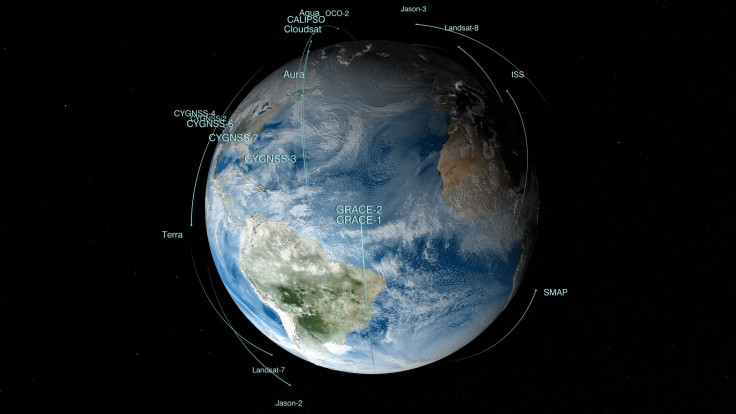NASA’s Satellites Orbit Earth In Mesmerizing Loops To Observe The Planet’s Environment

Even when we see a satellite streaking across the night sky, it can be hard to comprehend how many objects are circling Earth. But thankfully NASA has captured the satellites in all their glory.
A new visualization from NASA’s Goddard Space Flight Center shows the 25 that are orbiting near Earth and the International Space Station, part of several missions that “push the boundaries of science and technology to better understand Earth.” The satellites study air, rain, our oceans, natural disasters and other environmental features.
Their bird’s-eye view can also reach remote places on the planet that others cannot: “Satellites and instruments on the International Space Station circle the whole globe, seeing both where people live and those remote parts of deserts, mountains and the vast oceans that are difficult if not impossible to visit,” according to NASA. “With instruments in space, scientists can get data for the whole globe in detail that they can't get anywhere else.”
Read: Satellite Images Show Night Lights on Earth
It is mesmerizing to watch the satellites in NASA’s visualization circle the Earth with their special mathematical choreography that prevents them from crashing into one another. The objects include the ISS, and the entire Cygnus fleet following one another around the globe like a family of ducks.
The NASA troops are down a soldier, ever since the agency switched off EO-1 in March. That small, faithful satellite was supposed to last only a year in Earth’s orbit but hung on for 17 years of service snapping photos and taking measurements to earn the nickname “The Little Satellite That Could.” NASA said goodbye when it ran out of fuel, although it is still in orbit — and will stay there until that orbit slowly degrades and it re-enters Earth’s atmosphere in 2056 and burns up.
This hypnotizing view doesn’t include all the other satellites that belong to entities like the European Space Agency, nor all of the decommissioned satellites and pieces of spacecraft that are clogging Earth’s orbit, known as space debris.
See also:
© Copyright IBTimes 2024. All rights reserved.





















